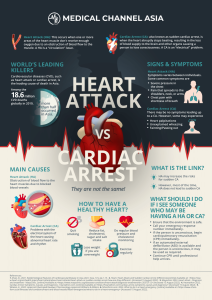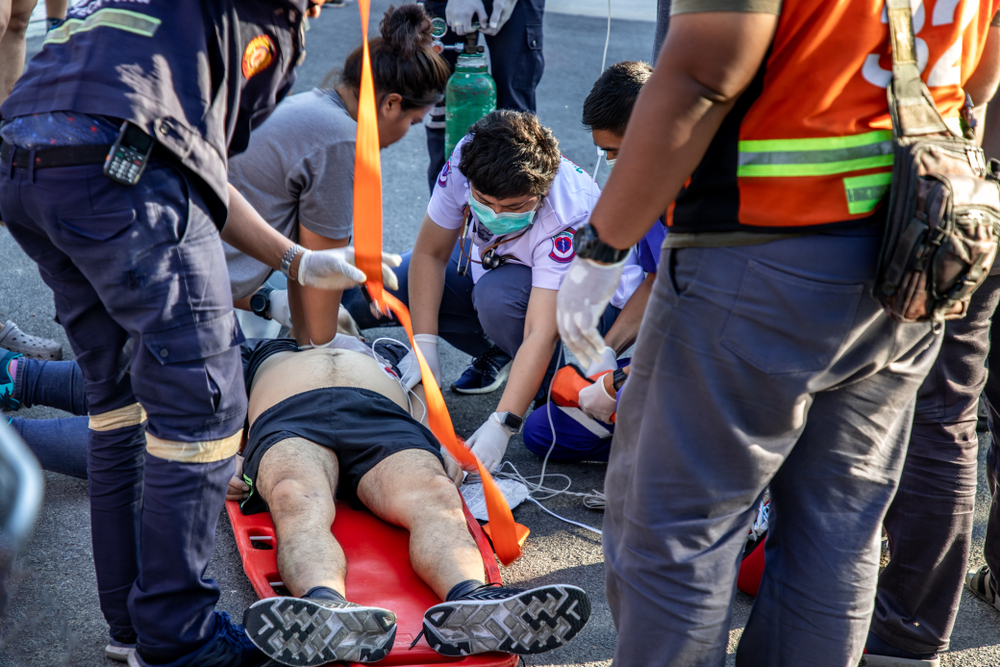Heart attack and cardiac arrest are two terms that are often used interchangeably, but they are not the same. While they are both related to the heart, they have different causes, symptoms, and treatment options.
In this article, we will discuss the differences between a heart attack and a cardiac arrest.
Heart Attack:
A heart attack, also known as a myocardial infarction, occurs when the blood flow to a part of the heart is blocked, usually by a blood clot. This blockage prevents oxygen and nutrients from reaching the heart muscle, causing the muscle tissue to begin to die. A heart attack can be mild or severe and can cause permanent damage to the heart muscle.
Cardiac Arrest:
Cardiac arrest is a sudden loss of heart function, usually caused by an electrical problem in the heart. This can cause the heart to stop beating completely, or beat irregularly, preventing it from pumping blood effectively. When this happens, the body’s organs and tissues, including the brain, are deprived of oxygen-rich blood and can begin to die within minutes.

Signs and Symptoms
Symptoms of a heart attack can include chest pain or discomfort, shortness of breath, nausea, vomiting, sweating, and pain or discomfort in the arms, back, neck, or jaw. The severity of the symptoms can vary from person to person, and some people may not have any symptoms at all.
Symptoms of cardiac arrest can include sudden loss of consciousness, cessation of breathing, and a lack of pulse or heartbeat. Cardiac arrest is a medical emergency and requires immediate treatment to prevent permanent damage or death.
Causes
The most common cause of a heart attack is atherosclerosis, which is the build-up of fatty deposits (plaques) on the inner walls of the arteries. These plaques can rupture, leading to the formation of blood clots that can block blood flow to the heart.
Other less common causes of a heart attack include coronary artery spasm, which is a sudden constriction of the coronary arteries, and coronary artery dissection, which is a tear in the inner layer of the coronary artery.
Risk factors for heart attack include age, family history of heart disease, smoking, high blood pressure, high cholesterol levels, diabetes, obesity, sedentary lifestyle, and stress.
Cardiac arrest can occur due to various underlying medical conditions, such as coronary artery disease, heart failure, congenital heart defects, arrhythmias, and cardiomyopathy.
Other factors that can increase the risk of cardiac arrest include drug or alcohol abuse, electrolyte imbalances, severe bleeding, and trauma to the chest.
In some cases, the cause of cardiac arrest may not be immediately apparent, and further testing and evaluation may be required to determine the underlying cause.
Treatment
Treatment for a heart attack usually involves restoring blood flow to the heart as quickly as possible. This can be done through medications, such as blood thinners or clot-busting drugs, or through procedures such as angioplasty or bypass surgery.
Treatment for cardiac arrest usually involves CPR (cardiopulmonary resuscitation) to maintain blood flow to the body and artificial respiration to provide oxygen until a defibrillator can be used to shock the heart back into a regular rhythm. Prompt medical attention is critical in improving the chances of survival for a person experiencing cardiac arrest.
What should I do if I see someone who may be having HA or CA?
- Ensure that the environment is safe.
- Call your emergency response number immediately.
- If the person is unconscious, begin cardiopulmonary resuscitation (CPR) immediately.
- If an automated external defibrillator (AED) is available and the person is unconscious, it may be used as required.
- Continue CPR until professional help arrives.
In summary, while heart attack and cardiac arrest are both serious medical conditions related to the heart, they have different causes, symptoms, and treatment options. A heart attack is caused by a blockage in blood flow to the heart, while cardiac arrest is a sudden loss of heart function. Understanding the differences between the two can help you recognize the symptoms and seek prompt medical attention, which can ultimately save lives.













